
views
X
Research source
To tame and train your bearded dragon, you’ll need to show it that it shouldn’t be afraid of you or other humans. Then you can begin to handle the dragon and feed it by hand.
Socializing Your Bearded Dragon

Spend plenty of time within sight of your bearded dragon. When you first bring a bearded dragon home, the best way to begin socializing is simply by letting the dragon become accustomed to your presence. Do common, daily actions within sight of your dragon’s cage. For example: Do homework or read next to your dragon’s cage. Watch TV within sight of the dragon. Have a conversation on the phone while sitting next to the dragon’s cage.
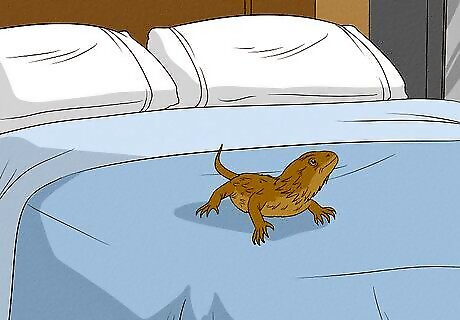
Let your dragon roam around certain areas of your house. To make your dragon even more comfortable around you, release your dragon from its cage and let it wander throughout your bedroom or living room while you are there. At first the dragon may show signs of skittishness, but if you leave it alone, it will eventually feel comfortable with you and its surroundings. Make sure that there are no other animals around when you let your bearded dragon walk around. Other pets, such as cats, may see the dragon as prey. Since bearded dragons are cold blooded, the area needs to be kept warm. If it's not, the dragon should only be out of its cage for a few minutes at a time. Do not allow your dragon into the kitchen. Their skin carries salmonella bacteria, which could contaminate food. Do not let your dragon into a room with an open outside door or window. The dragon could easily escape.

Give your bearded dragon space if it shows signs of stress. Although bearded dragons are usually calm and docile, they can become aggressive if stressed or frightened. You can tell if a bearded dragon is stressed: its “beard” (the area directly under its chin) will turn black. If you see this behavior, put the dragon back in its cage and give it time to settle down. If the dragon stands in an aggressive pose with its mouth open or lunges to bite you, you can be sure it’s stressed.
Training a Bearded Dragon to be Handled
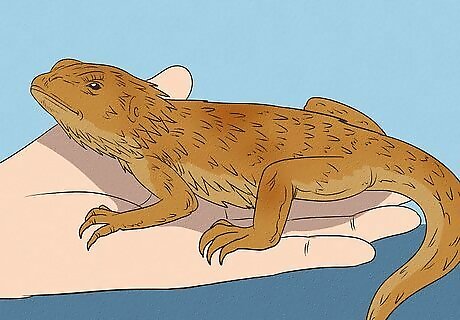
Handle your bearded dragon correctly. To pick up your bearded dragon, move your hand slowly towards its body from the side or front. Scoop its entire body up in your hand in a single movement. When you’re holding the dragon, make sure to support its full body, including legs and tail. If you pick a dragon up suddenly from the rear, it may mistake your hand for a predator and bite you. Never pick a dragon up by its tail. Unlike other lizards, their tails do not regenerate. You could cause serious harm to your lizard by grabbing it by its tail.
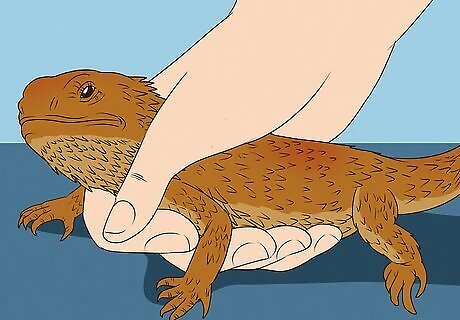
Maintain a firm hold when petting aggressive dragons. If your dragon becomes aggressive and tries to bite you once you have picked it up, hold its body firmly with one hand (so its jaws can’t reach your fingers) and use your other hand to stroke its back. This will soothe the dragon and teach it that human contact is not a cause for fear. If the dragon continues to act aggressively—or becomes even more aggressive—set it back in its cage. Wait 5 minutes, and pick the dragon up again. Be careful, however, as this effectively "rewards" the dragon for acting aggressively. If possible, it's better to hold the dragon until it calms down and then replace it in the cage so that it learns that calm behavior will help it get what it wants. Aggressive dragons take longer to train, but don’t give up hope. Given enough time, they’ll get used to being touched and handled.
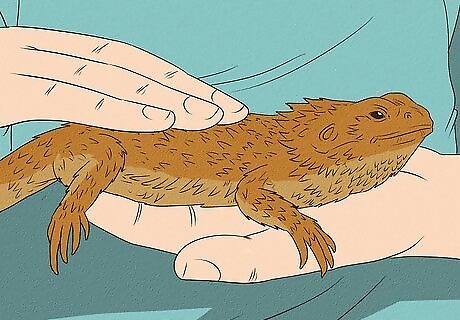
Handle your bearded dragon daily for short periods of time. Frequent human contact is the best way for a bearded dragon to learn that you are not a threat. Hold and handle your dragon daily, for about 10 minutes at a time, and it will become increasingly tame and comfortable with your presence. Dragons will become stressed if they’re handled for long periods of time. It’s better to have multiple, short handling sessions each day rather than a single, long session.
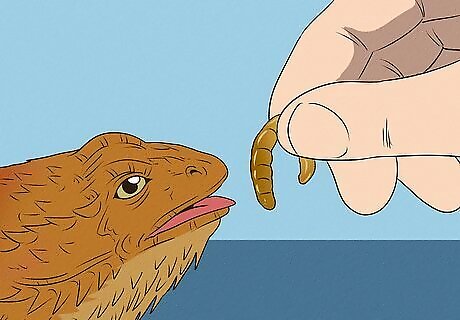
Feed your dragon by hand. Once your dragon has become accustomed to being touched and handled by you, you can train it to eat out of your hand. Simply hold a mealworm between two fingers and extend it near the dragon’s mouth. If your dragon is very comfortable with being handled out of its cage, you can hold a mealworm in your palm and let the dragon eat out of your hand. Prior to this point, you’ll need to feed your dragon in its cage using tweezers. Use the tweezers to drop mealworms down near your dragon.

















Comments
0 comment